I still don’t know how you can have the idea of sending a pot for cooking out to travel all over Germany – in a cute small suitcase ;) Maybe I should ask someone from Zwilling* – since they are the ones organizing this little event here :P

A pot – a suitcase – Zwilling and a lot of food bloggers. What is he talking about?! Well – today’s post and recipe are all about this event organized by Zwilling: “Die Kochtopfreise” or “A pot on holidays” :P Zwilling sent out one of their pots from the “Prime Series” to make a little journey through Germany. 16 states and 16 different food blogger. Yeah – we are getting closer now :P
As you probably already noticed – I am one of those bloggers representing Berlin on this tour. Yay! :) I am originally from the state of Baden-Württemberg, but living in Berlin for more than 12 years already. Since there are so many people from all over the world here in the city (that were not born here), you can say after – let’s say 10 years in town – that you are a “Berliner” – unlike J.F.K. who was here only for a couple of days :P Anyways – I am a Berliner. For real now :P
Enough said about me – this here should be about the pot and my contribution as the “official” food blogger from Berlin :P When I was asked to join the group of bloggers participating, I had to think about a dish that represents Berlin, something Berlin is known for in the world of foodies. First I thought “Eisbein mit Sauerkraut” or “Berliner Currywurst” – typical dishes from Berlin, but nothing that really fits to a baking blog (and I also don’t like Eisbein). So – what could it be instead? Well – that is pretty easy to be honest: Berliner!
People from the U.S. and other countries would call them donuts – here in Germany the have many different names: Krapfen, Berliner Ballen, Puffel, Kreppel, Pfannkuchen… what ever you want to call them – they are all delicious! ;) Invented by a pastry chef from Berlin in the 18th century to honor “Friedrich der Große”. No matter what name or for whom they were made – I think they are the perfect dish/bake to represent Berlin – it’s just a coincidence that they are called the same way :P
It was the first time for me making these Berliners at home. I always thought it would be too complicated to make, but it’s not. It is a pretty easy yeast dough, a nice filling like raspberry marmalade, pudding or in this case coffee cream, some frying and that’s it. Everybody can do that :) Did you know that some funny bakers use mustard as a filling to fool other people on carnival? Yeah – the thought of eating that is…. eeeewww ;P
INGREDIENTS / ZUTATEN
For the berliners:
1.4 oz. (42g) fresh yeast
1/2 cup (120ml) lukewarm milk
1/4 cup (50g) sugar
2 eggs
2 egg yolks
1 tsp. vanilla extract
4 cups (520g) all-purpose flour
1.7 oz. (50g) butter, at room temperature
vegetable oil for frying (about 6-8 cups)
vanilla sugar for coating
For the coffee cream:
3 cups (500ml) milk
1/2 cup (100g) sugar
0.7 oz. (20g) coffee beans
6 egg yolks
1 tbsp. vanilla extract
1 oz. (30g) cornstarch
1 oz. (30g) butter, at room temperature
Für die Berliner:
1 P. (42g) frische Hefe
120ml lauwarme Milch
50g Zucker
2 Eier
2 Eigelb
1 TL Vanille Extrakt
520g Mehl (Type 405)
50g weiche Butter
Frittierfett/Öl zum Ausbacken (ca. 1,5-2 Liter)
Zucker mit Vanillezucker zum Wälzen
Für die Kaffeecreme:
500ml Milch
100g Zucker
20g Kaffeebohnen
6 Eigelb
1 EL Vanille Extrakt
30g Speisestärke
30g weiche Butter
The cream is easy to make – it is basically a pudding made with a coffee flavored milk. Pudding is not difficult to make, right? :) Same for the Berliners itself – you can make little balls of dough and fry them, or you roll out the dough and cut out circles which turn into balls when frying. I was going for the cutting version – worked well. Have a look for yourself what you like best. What you definitely can do – make mini berliners/donuts out of the remaining dough. They are awesome!
DIRECTIONS / ZUBEREITUNG
2. Pour the mixture through a fine sieve to get rid of the crushed coffee beans and pour again into the pot. Mix the egg yolks with the remaining sugar, vanilla extract and cornstarch in a bowl. Bring the milk again to a boil and remove from the heat. Gradually add milk to the egg-yolk-mixture – make sure you only add only a couple tablespoons at the beginning and whisk constantly – otherwise the egg yolk will get to hot too quickly. Continue until you added about 1/3 of the milk to the bowl, then pour back into the pot – keep stirring. Heat up again until the mixture starts to thicken – you should get a texture of a pudding. Take from the heat, keep stirring, then add the butter and mix until all well combined. To make sure there will be no skin on the filling while cooling down, cover with plastic wrap and place it directly on the surface of the filling. Let cool down until only lukewarm and then place in the fridge to cool down completely.
3. For the dough crumble the fresh yeast into a large bowl and mix with the lukewarm milk and about a tablespoon of the sugar until dissolved. Cover and let rise for about 10 minutes. Add the eggs, egg yolks, the remaining sugar, vanilla extract and butter. Sift the flour on top and then mix and knead until you get a nice smooth dough. Form a ball, cover with a kitchen towel and let rise for about 30 minutes in the bowl until doubled in size.
4. Roll out the dough on a floured surface to a thickness of a finger – more or less. Cut out rounds with a size of about 3 inches (8cm) – use a cookie cutter or a glass. Collect remaining dough and roll out again or make small balls for mini-berliners. Place on a baking parchment and cover loosely with plastic wrap – let rise for another 20-30 minutes until doubled in size.
5. Heat up the oil in a pot until you reach a temperature of 350°F (175°C). Add some sugar/vanilla sugar to a small plate/bowl and keep on the side. Carefully add the dough pieces to the hot oil and fry on both sides until golden brown (about 2 minutes on each side) – add only 2-3 pieces at once to the pot. When done, take out and let drain a bit on a paper towel, then roll in the vanilla sugar until covered completely. Let cool down an a wire rack. Continue with the remaining dough pieces.
6. Take the cream out of the fridge and add to a piping bag with a long narrow nozzle or something like a syinge. Cut a small hole in side of the cooled berliners and use the back of a thin wooden spoon to get a bigger opening and some space for the filling inside – fill this space with the cream. Serve the same day.
2. Die Milch mit dem Kaffee durch ein feines Sieb in eine Schüssel schütten und wieder zurück in den Topf geben. Die Eigelb mit dem restlichen Zucker, Vanille Extrakt und der Speisestärke in einer Schüssel verrühren. Die Kaffeemilch wieder kurz aufkochen lassen und vom Herd nehmen. Nach und nach ein paar Löffel der Milch zu der Eigelbmasse geben und dabei ständig rühren – dies ist notwendig, damit sich die Temperatur langsam angleicht und das Eigelb nicht stockt. Noch mehr zugeben, bis etwa 1/3 der Milch untergerührt ist – dann wieder unter ständigem rühren alles zurück in den Kochtopf, auf den Herd und erneut erhitzen, bis die Masse andickt und zu einer Art Pudding wird. Vom Herd nehmen und noch etwas weiterrühren, dann die weiche Butter zugeben und so lange rühren, bis sich alles gut verbunden hat und eine glatte Masse entsteht. Damit die Füllung beim Abkühlen keine Haut bekommt, sollte man sie mit Klarsichtfolie abdecken, die direkt auf der Masse aufliegt. Sobald die Masse nur noch lauwarm ist, in den Kühlschrank stellen und komplett abkühlen lassen.
3. Für den Teig die Hefe in eine große Schüssel bröckeln und mit der lauwarmen Milch und einem Esslöffel des Zuckers verrühren, bis sie komplett aufgelöst ist. Abdecken und 10 Minuten gehen lassen. Eier, Eigelbe, den restlichen Zucker, Vanille Extrakt und Butter zur Schüssel zugeben, das Mehl darübersieben und alles zu einem Glatten Teig verkneten. Eine Kugel formen und in der Schüssel zugedeckt etwa 30 Minuten gehen lassen, bis sich das Volumen verdoppelt hat.
4. Den Teig auf einer bemehlten Fläche etwa Fingerdick ausrollen und mit einem Ausstecher oder Glas (ca. Ø 8cm/3 inch) Kreise ausstechen. Teigreste noch einmal zusammenkneten und erneut ausrollen und ausstechen, oder kleine Bälle für Mini-Berliner formen. Alles auf ein Backpapier legen, locker mit Klarsichtfolie abdecken und noch einmal 20-30 Minuten gehen lassen – das Volumen sollte sich wieder verdoppelt haben.
5. In der Zwischenzeit das Öl in einem Topf auf ca. 175°C (350°F) erhitzen. In einer kleinen Schüssel Zucker/Vanillezucker bereitstellen. Die aufgegangenen Teigscheiben vorsichtig in das heiße Fett geben (max. 2-3 auf einmal) und auf beiden Seiten goldbraun frittieren (ca. 2 Minuten je Seite) – herausnehmen, auf einem Papiertuch etwas abtropfen lassen und dann gleich im Zucker wälzen. Mit den restlichen Teigscheiben/Kugeln ebenso verfahren. Auf einem Kuchengitter abkühlen lassen.
6. Die Creme aus dem Kühlschrank nehmen und in einen Spritzbeutel mit länglicher Tülle oder eine Teigspritze füllen. Die abgekühlten Berliner am Rand mit einem Messer einschneiden und mit der Rückseite eines dünnen Kochlöffels in die Berliner stechen und einen Hohlraum formen – in diesen dann die Füllung einspritzen. Am selben Tag noch servieren.
So this was the recipe for Berlin – I hope you liked it :) If you want to know more about the whole event, take a look at the website of Zwilling about “Die Kochtopfreise” here. You can see all bloggers that participate and where it goes next. I got the pot from Kathi (www.kathisberries.de) – I am sending it now to Hamburg, so Jana from nomnoms | treats of life can prepare something delicious! :)
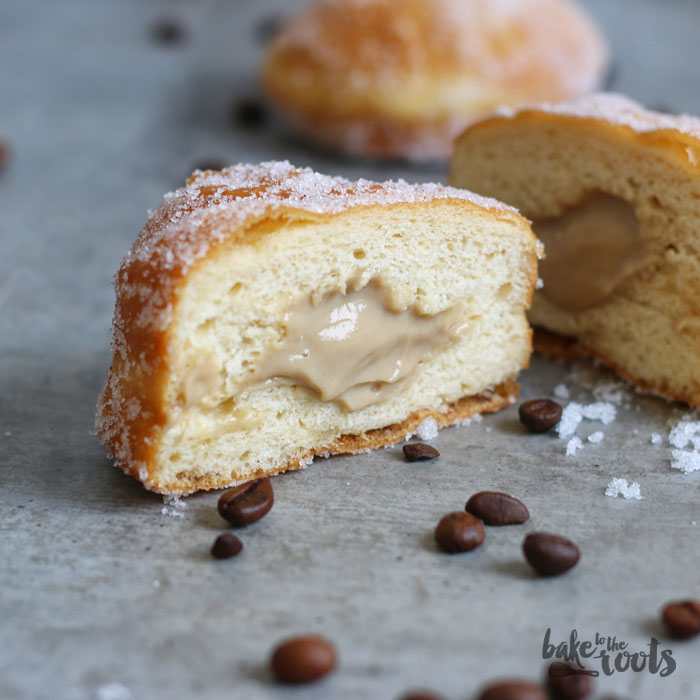
Craving more? Keep in touch on Facebook, Twitter, Instagram and Pinterest for new post updates and more. You can also contact me with any questions or inquiries!
Here is a version of the recipe you can print easily.
Print
Berliners aka. Donuts with Coffee Cream
- Prep Time: 60
- Cook Time: 20
- Total Time: 180
- Yield: 15 1x
Ingredients
For the berliners
- 1.4 oz. (42g) fresh yeast
- 1/2 cup (120ml) lukewarm milk
- 1/4 cup (50g) sugar
- 2 eggs
- 2 egg yolks
- 1 tsp. vanilla extract
- 4 cups (520g) all-purpose flour
- 1.7 oz. (50g) butter, at room temperature
- vegetable oil for frying (about 6-8 cups)
- vanilla sugar for coating
For the coffee cream
- 3 cups (500ml) milk
- 1/2 cup (100g) sugar
- 0.7 oz. (20g) coffee beans
- 6 egg yolks
- 1 tbsp. vanilla extract
- 1 oz. (30g) cornstarch
- 1 oz. (30g) butter, at room temperature
Instructions
- Start with the filling. Place the coffee beans on a wooden board, cover witha paper towel and crush with something heavy (e.g. a saucepan or pot). Add together with the mild and half of the sugar to a pot and bring to a boil while stirring constantly. When boiling take from the heat, cover with a lid and let stand for about 15-20 minutes, so the coffee flavors can get into the milk.
- Pour the mixture through a fine sieve to get rid of the crushed coffee beans and pour again into the pot. Mix the egg yolks with the remaining sugar, vanilla extract and cornstarch in a bowl. Bring the milk again to a boil and remove from the heat. Gradually add milk to the egg-yolk-mixture – make sure you only add only a couple tablespoons at the beginning and whisk constantly – otherwise the egg yolk will get to hot too quickly. Continue until you added about 1/3 of the milk to the bowl, then pour back into the pot – keep stirring. Heat up again until the mixture starts to thicken – you should get a texture of a pudding. Take from the heat, keep stirring, then add the butter and mix until all well combined. To make sure there will be no skin on the filling while cooling down, cover with plastic wrap and place it directly on the surface of the filling. Let cool down until only lukewarm and then place in the fridge to cool down completely.
- For the dough crumble the fresh yeast into a large bowl and mix with the lukewarm milk and about a tablespoon of the sugar until dissolved. Cover and let rise for about 10 minutes. Add the eggs, egg yolks, the remaining sugar, vanilla extract and butter. Sift the flour on top and then mix and knead until you get a nice smooth dough. Form a ball, cover with a kitchen towel and let rise for about 30 minutes in the bowl until doubled in size.
- Roll out the dough on a floured surface to a thickness of a finger – more or less. Cut out rounds with a size of about 3 inches (8cm) – use a cookie cutter or a glass. Collect remaining dough and roll out again or make small balls for mini-berliners. Place on a baking parchment and cover loosely with plastic wrap – let rise for another 20-30 minutes until doubled in size.
- Heat up the oil in a pot until you reach a temperature of 350°F (175°C). Add some sugar/vanilla sugar to a small plate/bowl and keep on the side. Carefully add the dough pieces to the hot oil and fry on both sides until golden brown (about 2 minutes on each side) – add only 2-3 pieces at once to the pot. When done, take out and let drain a bit on a paper towel, then roll in the vanilla sugar until covered completely. Let cool down an a wire rack. Continue with the remaining dough pieces.
- Take the cream out of the fridge and add to a piping bag with a long narrow nozzle or something like a syinge. Cut a small hole in side of the cooled berliners and use the back of a thin wooden spoon to get a bigger opening and some space for the filling inside – fill this space with the cream. Serve the same day.
Notes
- Enjoy frying!
*I have partnered with Zwilling to bring you this delicious Berliner. That’s why I have to declare this here in Germany as Advertising. All I wrote in this article is still based on my own opinion and has not been affected by anybody :)

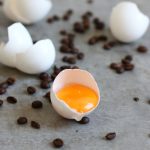






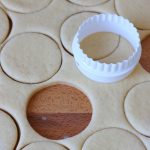
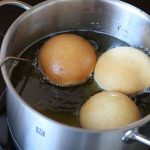

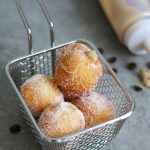



 I love my job, but in between I love to bake and try new things in the kitchen. A lot of my friends and colleagues encourage me to bake - for a very simple reason: they get the leftovers - and it seems they like it most of the time ;)
I love my job, but in between I love to bake and try new things in the kitchen. A lot of my friends and colleagues encourage me to bake - for a very simple reason: they get the leftovers - and it seems they like it most of the time ;) 












I can’t wait to try these, they look delicious :) Do I have to use fresh yeast or can I use active dried yeast? This is my first time commenting but I’ve been following you on Instagram for ages!
Hi!
There is no need to use fresh yeast – dry yeast is also fine! Instead of the 42g fresh yeast you can use 14g of dry yeast. The rest stays the same :)
Cheers,
Marc